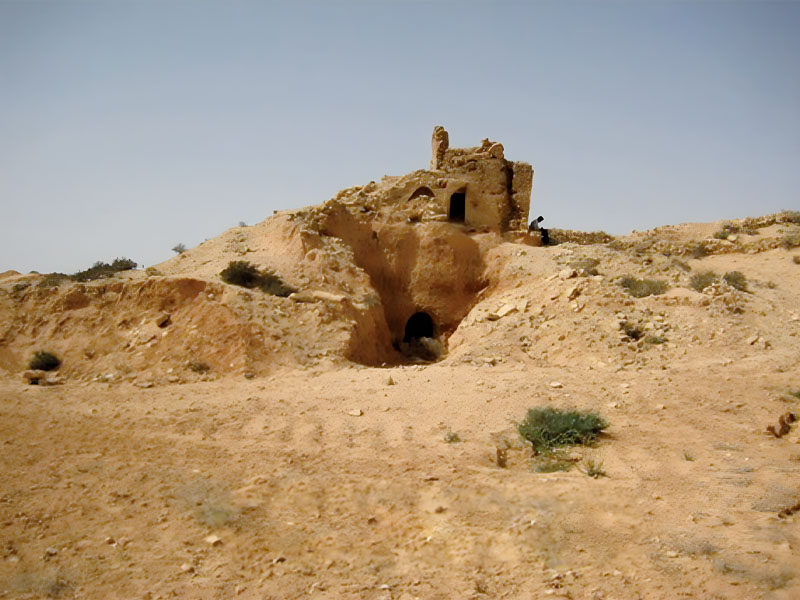Traditional Qusbahs from the Middle Ages in southeastern Tunisia: The ruins of Jebel Dummar and the Qusbahs’ role in drawing people to the Sahara desert
Issue 29

In southeastern Tunisia, ruins from the Middle Ages prove that there were once towns and a significant population in this area. Terraces ring the hills; these served as fortresses with towers for surveillance. They then evolved into palaces and areas that were equipped to store crops for at least five years.
The architecture of the mountainous area near the desert ranges from simple abodes to castles and palaces or buildings, (known locally as Qusbah), between the castle and the palace. Archaeological excavations in Jebel Dummar uncovered more than one Qusbah in areas such as Alulah and Al Wati near Bani Khaddash. The Qusbahs played an important role in drawing people to areas used to grow olive and fig trees and grains such as barley; people lived in the vicinity of the two Qusbahs. There is also a hill with caves linked by Dawamis (tunnels). The tunnels connecting the caves and the Qusbah made movement easier for the cave dwellers, but they did not serve others’ needs, so a castle with a fortified entrance was built at the top of the hill.
To study this type of architecture, we must refer to historical resources. There is little written information about this part of the country, so we must focus on the available archaeological findings, which give us very important information about the emergence of populated areas, and the religion, education, supplies and student lodgings. In the 6th century, there were significant populations in these mountainous areas.
Ali alsabty
Tunisia



































































